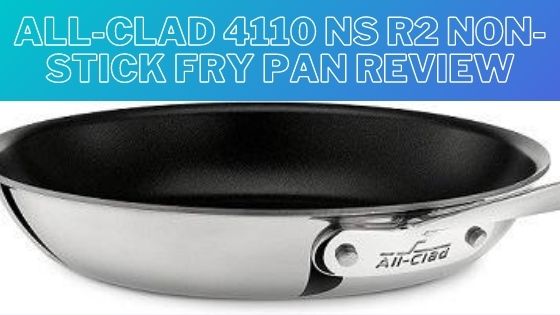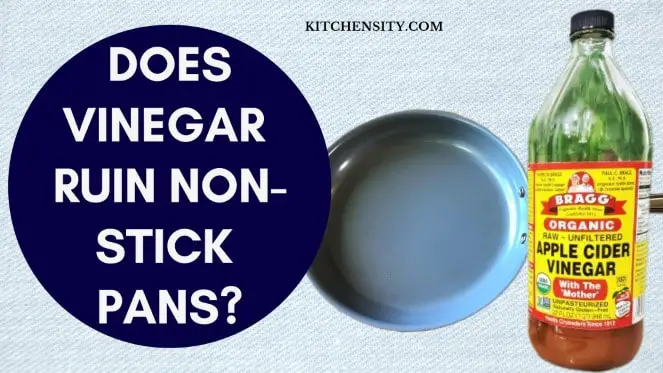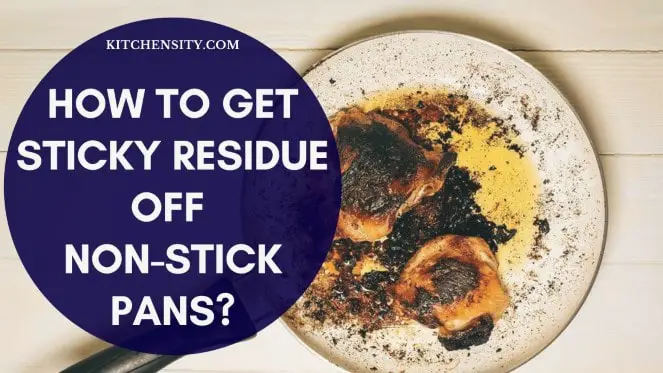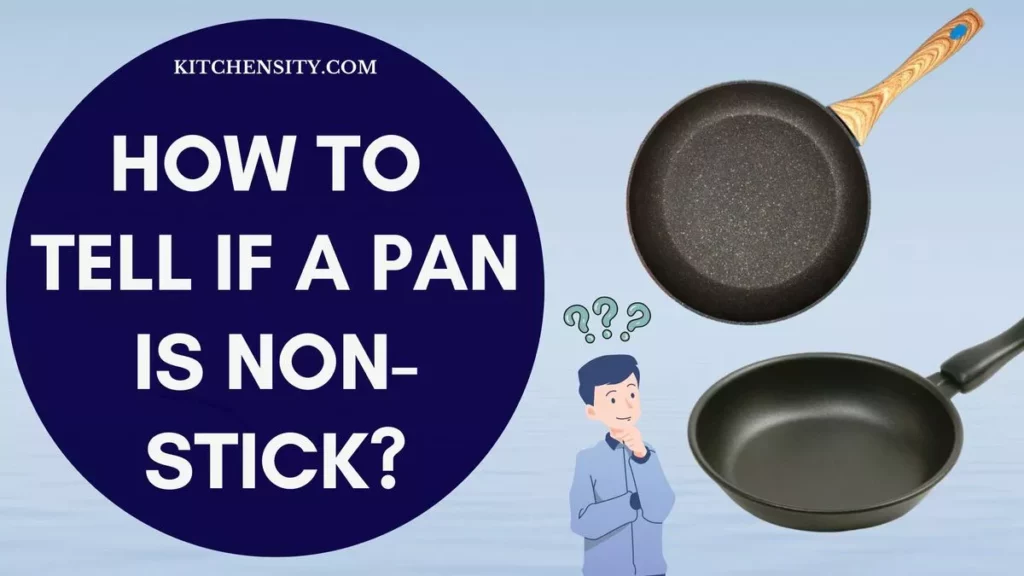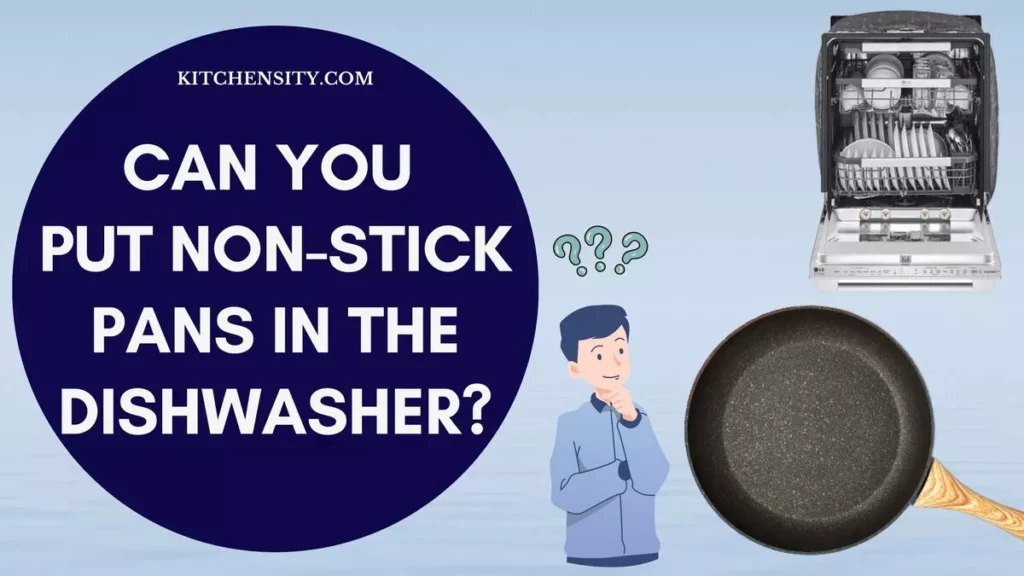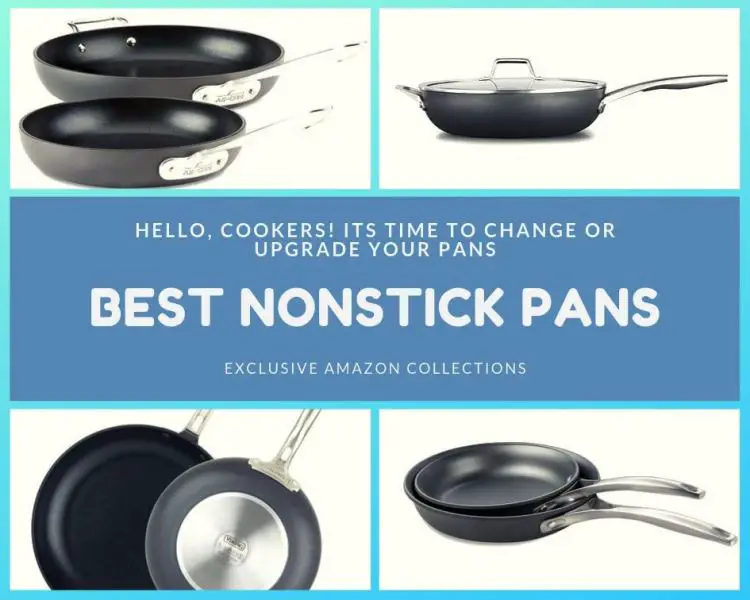Non-stick pans have come a long way, changing how we cook and clean. These pans have evolved with new coatings and designs, making cooking more convenient and enjoyable. The market is always adapting, introducing new materials and eco-friendly coatings, ensuring that non-stick pans are durable and meet our cooking needs.
Manufacturers are creating cookware that prevents food from sticking and enhances the cooking process. In this article, I explore the latest advancements in non-stick pan technology, including new coatings, innovations, and their impact on the cookware market.
Table of Contents
- 1 What Is The Coating On Modern Non-Stick Pans?
- 2 Is There Still Teflon In Non-Stick Pans?
- 3 Advancements In Non-Stick Pan Technology.
- 3.1 1. Diamond-Coated Nonstick Pans.
- 3.2 2. Ceramic Reinforced Nonstick Coatings.
- 3.3 3. Eco-Friendly Nonstick Formulations.
- 3.4 4. Improved Heat Distribution Technology.
- 3.5 5. Hybrid Nonstick Surfaces.
- 3.6 6. Multi-Layered Nonstick Coatings.
- 3.7 7. Enhanced Release Systems.
- 3.8 8. Scratch-Resistant Nonstick Surfaces.
- 3.9 9. Induction-Compatible Nonstick Pans.
- 3.10 10. Temperature-Resistant Nonstick Coatings.
- 4 Non-Stick Cookware Market Size.
- 5 The Role Of PFOA In Non-Stick Coatings.
- 6 FAQs: Advancements In Non-Stick Pans.
- 6.1 What Are The Benefits Of The Latest Advancements In Non-Stick Pan Technology?
- 6.2 How Do Diamond-Coated Non-Stick Pans Differ From Traditional Non-Stick Pans?
- 6.3 Are Ceramic-Reinforced Non-Stick Pans Safer Than Traditional Non-Stick Pans?
- 6.4 Are There Still Health Concerns With New Non-Stick Coatings?
- 6.5 How Do The Latest Advancements In Non-Stick Pans Contribute To Sustainability?
- 6.6 Which New Features Are Truly Game-Changers For Everyday Cooking?
What Is The Coating On Modern Non-Stick Pans?
The coating on modern non-stick pans is typically made of polytetrafluoroethylene (PTFE), also known as Teflon, and ceramic or silicone-based coatings, which offer similar non-stick properties. These coatings are applied to the pan’s surface through a process called spray-coating or roller-coating, and they are designed to withstand high temperatures and resist scratching and abrasion.
- Teflon, a brand name for PTFE (polytetrafluoroethylene), has been a staple in non-stick cookware for decades. It is known for its excellent non-stick properties, allowing food to slide off easily and making cleaning a breeze.
- Ceramic coatings, on the other hand, are made from inorganic materials like silicon and oxygen. They are prized for being free of PFOA and PTFE, making them a popular choice for health-conscious consumers. Ceramic coatings also offer good non-stick performance and are more resistant to scratches than traditional Teflon coatings.
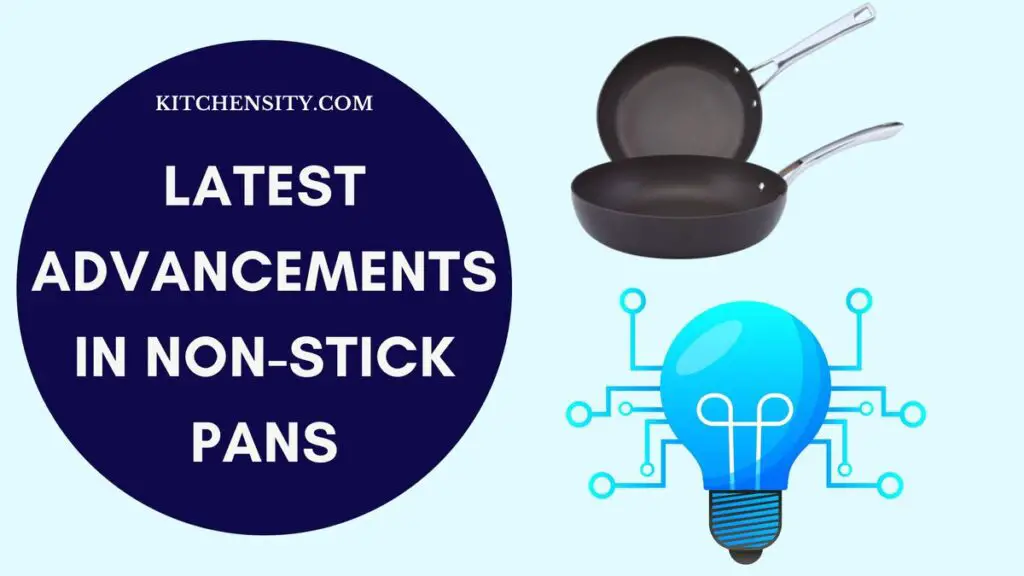
Each type of coating has its unique properties and benefits. Teflon coatings are known for their exceptional non-stick properties, which make them ideal for cooking delicate foods like eggs and fish. However, they may not be as durable as ceramic coatings and can degrade when exposed to high temperatures.
Ceramic coatings, on the other hand, are lauded for their durability and scratch resistance. They can withstand higher temperatures without emitting harmful fumes, making them a safer option for high-heat cooking. Also, some ceramic coatings are infused with diamond particles or reinforced with ceramic to enhance their non-stick properties and durability further.
Diamond-coated non-stick pans are a prime example of advanced coatings. These pans feature a layer of diamond particles infused into the non-stick coating, providing exceptional hardness and durability. Diamond coatings are known for their superior scratch resistance, making them suitable for use with metal utensils without fear of damaging the surface. They also offer excellent heat conduction, ensuring even cooking and browning.
Also Read – Best Non-Stick Cookware Brands
Is There Still Teflon In Non-Stick Pans?
Yes, Teflon, a brand name owned by Chemours (formerly a part of DuPont), is still used in many non-stick pans. For decades, Teflon coatings have been widely used in the manufacturing of non-stick pans due to their exceptional non-stick properties.
But, the use of traditional Teflon coatings has raised some safety concerns. When heated to very high temperatures (above 500°F or 260°C), PTFE can release fumes that may be harmful to birds and can cause flu-like symptoms in humans, a condition known as polymer fume fever. This led to concerns about the safety of using Teflon-coated pans, especially if they are overheated or damaged, causing the release of PTFE fumes.
Shifting Of PFOA To PFOA-Free Nonstick Pans.
The non-stick industry, however, didn’t stand idly by. In a commendable show of responsibility, a major shift took place in the early 2000s. Manufacturers voluntarily phased out PFOA, and today, the Teflon you find in modern non-stick pans is PFOA-free. This was a pivotal step, restoring confidence and ensuring Teflon’s rightful place in kitchens around the world.
But Teflon didn’t stop there. Innovation continued, aiming not just for safety, but also for enhanced performance. Here are some exciting advancements transforming the landscape of non-stick cookware.
- Advanced PTFE formulations: New generation PTFE coatings boast improved durability, even withstanding higher temperatures without compromising non-stick qualities. Imagine searing a perfect steak and cleaning the pan with just a quick swipe – thanks to Teflon’s evolution, it’s now a reality.
- Hybrid compositions: Introducing ceramic particles into the PTFE mix creates a hybrid shield, offering increased scratch resistance and improved heat distribution. These pans are tough cookies, ready to handle your most ambitious culinary adventures.
- Nano-enhanced surfaces: Tiny, nanoscale features are etched onto the coating, further elevating its non-stick performance. Food practically floats on these pans, making even delicate tasks like making crepes a breeze.
Beyond safety and performance, Teflon is also embracing sustainability. New research focuses on eco-friendly manufacturing processes, reducing the environmental impact of this beloved material.
So, is there still Teflon in non-stick pans? Absolutely! But it’s a Teflon reborn, one that prioritizes safety, performance, and environmental responsibility. It’s a Teflon that, much like a perfectly cooked omelet, has learned to evolve while retaining its essence.
Also Read – Do Chefs Use Non-Stick Cookware?
Advancements In Non-Stick Pan Technology.
Advancements in non-stick pan technology involve ongoing innovations in design, materials, and coatings. These advancements aim to improve the performance, durability, and safety of non-stick pans, meeting the needs of consumers and modern cooking techniques. These advancements include new coating materials, surface treatments, and construction methods, marking a significant evolution in the non-stick pan-industry.
1. Diamond-Coated Nonstick Pans.
Diamond-coated nonstick pans are a significant advancement in non-stick pan technology. These pans feature a coating infused with diamond particles, which enhances their durability and non-stick properties. These diamond particles create a harder surface that is more resistant to scratches and abrasion, resulting in a longer lifespan for the pan.
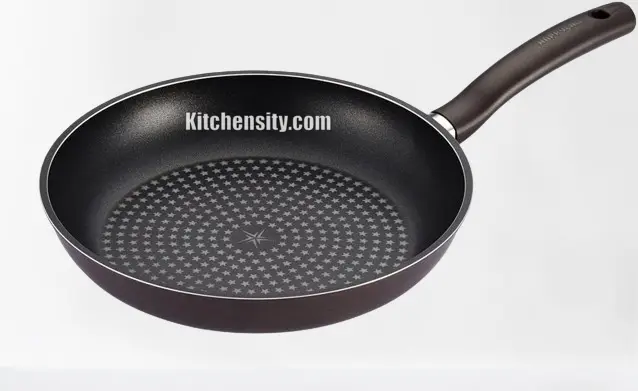
Also, the diamond coating provides improved heat conduction and distribution, ensuring even cooking and browning of food. This technology represents a premium option for non-stick pans, offering superior performance and longevity compared to traditional coatings.
Also Read – What Recipes Work Best With Non-Stick Pans?
2. Ceramic Reinforced Nonstick Coatings.
Ceramic-reinforced nonstick coatings are designed to improve scratch resistance and overall durability. These pans can withstand the rigors of daily cooking without losing their non-stick properties. Ceramic reinforcement also enhances the pan’s ability to distribute heat evenly, preventing hot spots and ensuring uniform cooking.
This type of coating is particularly popular among health-conscious consumers due to its non-toxic nature and the absence of potentially harmful chemicals like PFOA and PFAS. Ceramic-reinforced coatings provide a balance of performance and safety, making them a desirable choice for many home cooks.
3. Eco-Friendly Nonstick Formulations.
Eco-friendly nonstick formulations represent a shift towards more sustainable and environmentally friendly non-stick coatings. These formulations are free from harmful chemicals like PFOA and PFAS, which are known to adversely affect human health and the environment. Instead, they utilize natural or safer synthetic alternatives that achieve non-stick properties without compromising performance.
Eco-friendly nonstick coatings are designed to be durable, scratch-resistant, and easy to clean, offering a safe and responsible choice for consumers who prioritize sustainability in their cookware.
4. Improved Heat Distribution Technology.
Advancements in heat distribution technology aim to enhance the overall cooking performance of non-stick pans. These advancements focus on improving the pan’s ability to distribute heat evenly across the cooking surface, ensuring that food cooks uniformly without hot spots.
Improved heat distribution technology can result in better searing, browning, and cooking results, allowing home cooks to achieve professional-level outcomes in their dishes. This technology is especially beneficial for dishes that require precise temperature control and even cooking, such as delicate sauces and proteins.
5. Hybrid Nonstick Surfaces.
Hybrid nonstick surfaces combine different materials to create unique non-stick properties. By blending materials with complementary properties, manufacturers can create coatings that offer a combination of benefits, such as enhanced durability, improved release, and better heat retention.
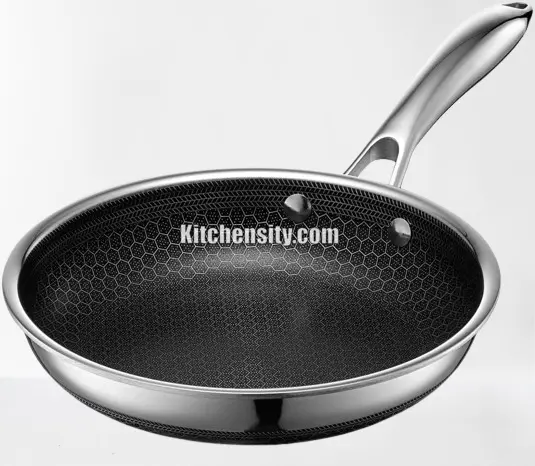
Hybrid surfaces may combine traditional non-stick materials like PTFE with other materials like ceramic or silicone to achieve specific performance goals. These surfaces are designed to provide a balance of non-stick properties and other desirable characteristics, catering to the diverse needs of consumers.
Also Read – How To Care For Non-Stick Pans When Used Outdoors?
6. Multi-Layered Nonstick Coatings.
Multi-layered nonstick coatings are designed to improve the durability and performance of non-stick pans. These coatings consist of multiple layers applied to the cooking surface, each serving a specific purpose. For example, a base layer may provide adhesion to the pan, while subsequent layers may offer non-stick properties, durability, and scratch resistance.
Multi-layered coatings are engineered to withstand the wear and tear of daily cooking, ensuring that the pan maintains its non-stick properties over time. Also, these coatings may enhance heat conduction and distribution, leading to more consistent cooking results.
7. Enhanced Release Systems.
Enhanced release systems are designed to improve the ease of food release from non-stick surfaces. These systems utilize advanced surface treatments or textures to reduce surface tension, allowing food to slide off effortlessly.
Enhanced release systems can make cooking and cleaning easier, as food residues are less likely to stick to the pan’s surface. This technology is particularly beneficial for delicate foods that are prone to sticking, such as eggs and pancakes.
8. Scratch-Resistant Nonstick Surfaces.
Scratch-resistant nonstick surfaces are engineered to withstand the abrasion and wear that non-stick pans endure during cooking and cleaning. These surfaces are designed to resist scratches from utensils and cleaning tools, maintaining their non-stick properties and appearance over time.
Manufacturers can create pans that are more resistant to damage, prolonging their lifespan and usability by using durable materials and protective coatings. Scratch-resistant surfaces are ideal for busy kitchens where non-stick pans are frequently used and need to withstand heavy use without compromising their performance.
9. Induction-Compatible Nonstick Pans.
Induction-compatible nonstick pans are designed to work efficiently with induction cooktops, which rely on magnetic fields to generate heat. These pans feature a magnetic base that allows them to heat up quickly and evenly when placed on an induction cooktop.
Induction-compatible nonstick pans offer the same non-stick properties and performance as traditional nonstick pans, making them suitable for a wide range of cooking tasks. This technology has become increasingly popular as induction cooking has gained popularity for its energy efficiency and precise temperature control.
10. Temperature-Resistant Nonstick Coatings.
Temperature-resistant nonstick coatings are engineered to withstand higher temperatures without compromising their non-stick properties or releasing harmful fumes. These coatings are designed to be safe for use at high temperatures, making them suitable for a variety of cooking methods, including searing, sautéing, and broiling.
Also Read – Can You Use Non-Stick Cookware On High Heat?
Non-Stick Cookware Market Size.
The nonstick cookware market has experienced significant growth in recent years, driven by factors such as changing consumer lifestyles, increasing disposable incomes, and a growing preference for convenient cooking solutions. The market encompasses a wide range of nonstick cookware products, including pans, pots, baking sheets, and more, catering to diverse cooking needs.
Global Market Size
- USD 19.56 billion in 2021: According to SkyQuest Technology Research, the global non-stick cookware market was valued at USD 19.56 billion in 2021. They further project the market to reach USD 25.3 billion by 2030, growing at a CAGR of 2.9%.
- USD 20.13 billion in 2022: Grand View Research estimates the global non-stick cookware market size at USD 20.13 billion in 2022. They forecast the market to reach USD 25.39 billion by 2028, with a CAGR of 3.3%.
Also Read – How To Use A Non-Stick Pan For The First Time?
Factors Driving Growth
- Rising Disposable Incomes: Increasing purchasing power globally, particularly in developing economies, fuels demand for premium cookware like nonstick pans.
- Convenience and Health Benefits: Nonstick cookware offers ease of use and reduces the need for oil, appealing to health-conscious consumers.
- Technological Advancements: Innovations in coatings, materials, and heat distribution enhance performance and durability, further boosting market growth.
- Increasing Urbanization: Busy lifestyles in urban areas create a demand for time-saving cooking solutions, making nonstick cookware a popular choice.
Regional Variations
- Asia Pacific: The largest market share, driven by rapid urbanization and growing disposable incomes in China, India, and Southeast Asia.
- North America: A mature market with slower growth, but still significant demand for premium brands and advanced features.
- Europe: A steady market with a focus on quality and sustainability, with Germany and France leading the way.
Also Read – Are Non-Stick Coatings Safe For Cooking?
Future Outlook Of Non-Stick Cookware
- Continued market expansion is expected, driven by the factors mentioned above and innovations in eco-friendly materials and coatings.
- Increased awareness of health benefits and convenience will likely fuel demand, particularly among younger generations.
- Online retail platforms are expected to play a major role in market growth, providing wider access and convenience to consumers.
Nonstick Cookware Market Size: A Regional and Projected Look.
| Metric | 2021 Value (USD billion) | 2022 Value (USD billion) | 2028 Projected Value (USD billion) | CAGR (%) |
| Global Market Size (SkyQuest) | 19.56 | – | 25.3 | 2.9 |
| Global Market Size (Grand View Res.) | – | 20.13 | 25.39 | 3.3 |
Also Read – Types Of Non-Stick Coatings
The Role Of PFOA In Non-Stick Coatings.
PFOA, or perfluorooctanoic acid, has historically been used in the production of non-stick coatings, including those found in cookware such as pans and pots. It is part of a family of chemicals known as per- and poly-fluoroalkyl substances (PFAS), which are valued for their non-stick and water-repellent properties. However, concerns have been raised about the potential health and environmental impacts of PFOA, leading to efforts to phase it out of use in non-stick coatings.
The phase-out of PFOA has been driven by growing evidence of its persistence in the environment and its potential adverse effects on human health. Studies have linked PFOA exposure to various health issues, including developmental problems, immune system effects, and certain types of cancer. As a result, regulatory agencies and industry stakeholders have taken steps to reduce and eliminate the use of PFOA in non-stick coatings.
One significant development has been the replacement of PFOA with safer alternatives in non-stick coatings. Manufacturers have developed new formulations that achieve similar non-stick properties without relying on PFOA. These alternatives are designed to be safer for human health and the environment, addressing the concerns associated with PFOA while maintaining the performance characteristics that consumers expect from non-stick coatings.
The regulatory landscape regarding PFOA in non-stick pans has evolved in response to these concerns. Regulatory agencies around the world have implemented measures to restrict the use of PFOA and limit human and environmental exposure. This includes regulations on manufacturing processes, product labeling, and environmental monitoring to ensure compliance with safety standards.
Also Read – How To Extend The Lifespan Of Non-Stick Pans?
FAQs: Advancements In Non-Stick Pans.
-
What Are The Benefits Of The Latest Advancements In Non-Stick Pan Technology?
The latest advancements offer improved durability, enhanced scratch resistance, better heat distribution, and eco-friendly formulations, catering to the needs of modern consumers who seek convenience, health benefits, and sustainability in their cookware.
-
How Do Diamond-Coated Non-Stick Pans Differ From Traditional Non-Stick Pans?
Diamond-coated non-stick pans utilize a layer of diamond particles in their coatings, providing superior durability, scratch resistance, and heat conduction compared to traditional non-stick pans, making them a premium option for home cooks.
-
Are Ceramic-Reinforced Non-Stick Pans Safer Than Traditional Non-Stick Pans?
Yes, ceramic-reinforced non-stick pans are often considered safer because they are free from harmful chemicals like PFOA and PFAS. The ceramic reinforcement enhances scratch resistance and overall durability while maintaining non-stick properties.
-
Are There Still Health Concerns With New Non-Stick Coatings?
While PFOA, once a major health concern, is no longer used in reputable brands, some newer coatings may involve chemicals less studied. Look for PFOA-free and PTFE-free options, and prioritize reputable brands with transparent manufacturing practices.
-
How Do The Latest Advancements In Non-Stick Pans Contribute To Sustainability?
The latest advancements focus on eco-friendly formulations and materials, reducing the environmental impact of non-stick pans. Additionally, improved durability and scratch resistance can extend the lifespan of pans, reducing waste and promoting sustainability.
-
Which New Features Are Truly Game-Changers For Everyday Cooking?
Enhanced release systems, scratch-resistant surfaces, and multi-layered coatings for durability stand out. Consider your cooking style and prioritize features that address your most common challenges.
Katrina Smith is a seasoned expert with over 25 years of experience in all things related to cooking and the kitchen. As an avid cook and kitchen enthusiast, she is passionate about sharing her knowledge and expertise on cookware, kitchen appliances, kitchen tips, and kitchen staples.
Through her articles and reviews, Katrina aims to inspire and help others improve their cooking skills, experiment with different ingredients, and invest in quality cookware and appliances.

